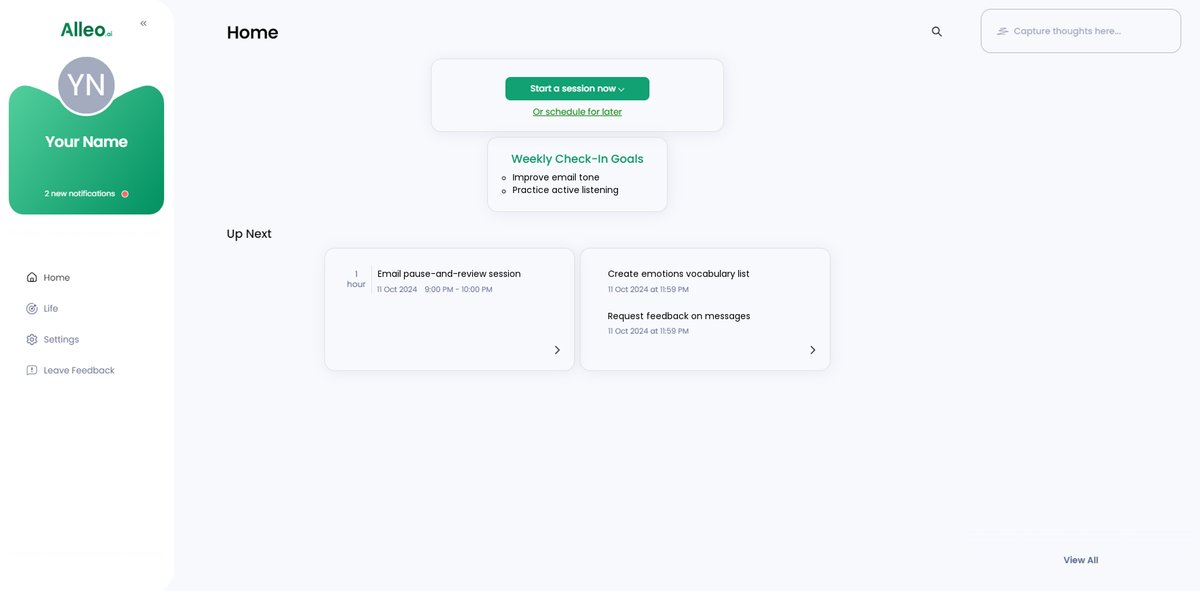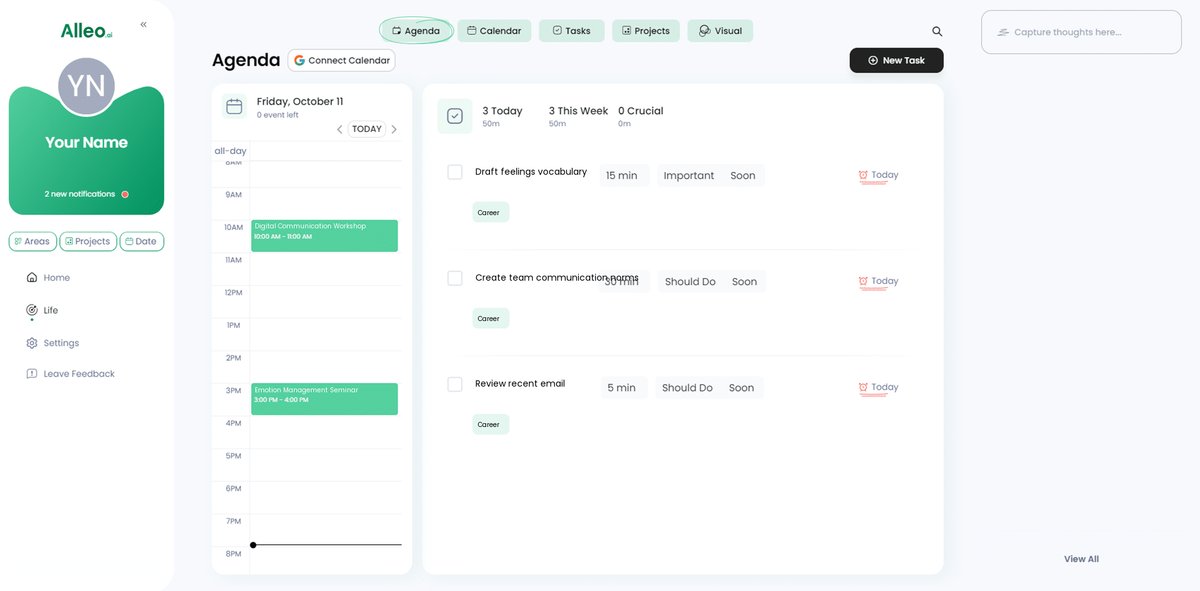How Professionals Can Master Emotional Management in Digital Communication: 6 Essential Strategies
Ever found yourself rereading an email, worried about how your tone might be perceived? This is a common challenge in managing emotions in digital communication.
As a life coach, I’ve helped many professionals navigate such challenges. Managing emotions in digital communication is vital for remote workers, especially when it comes to emotional intelligence in virtual communication and managing digital workplace stress.
In this post, I’ll share strategies to master emotional responses. You’ll learn to enhance your communication skills and build better relationships, focusing on effective email etiquette for professionals and digital empathy in professional settings.
Let’s dive in and explore techniques for managing emotions in digital communication.

Understanding Emotional Challenges in Digital Communication
Navigating digital communication often comes with misinterpretations. Emails and chat messages can easily be misread, highlighting the importance of managing emotions in digital communication.
Tone can be especially hard to convey, impacting emotional intelligence in virtual communication.
Many remote workers experience frustration. Unmanaged emotions can strain professional relationships and reduce productivity, emphasizing the need for managing digital workplace stress.
I see this struggle often in professional settings.
The challenges are real. Professionals find it tough to handle emotional responses, often requiring online conflict resolution techniques.
This can lead to misunderstandings and conflicts, particularly when nonverbal cues in remote interactions are absent.
In my experience, clarity in digital communication is crucial. Recognizing and managing emotions in digital communication is key for effective email etiquette for professionals.
Let’s explore how you can tackle this challenge of emotional regulation in virtual meetings.

Steps to Master Emotional Management in Digital Communication
To overcome these challenges and improve managing emotions in digital communication, follow these key steps:
- Practice emotional self-awareness before responding: Identify your emotions before responding to messages, enhancing your emotional intelligence in virtual communication.
- Use active listening techniques in digital chats: Paraphrase and ask open-ended questions to improve digital empathy in professional settings.
- Implement a pause-and-review strategy for emails: Draft, step away, and review before sending, promoting effective email etiquette for professionals.
- Develop a feelings vocabulary for clear expression: Expand your vocabulary to express emotions clearly, aiding in online conflict resolution techniques.
- Establish team norms for digital communication: Set guidelines for tone, response times, and feedback, addressing nonverbal cues in remote interactions.
- Seek feedback on your digital communication style: Request and implement feedback from colleagues to enhance your professional tone in instant messaging.
Let’s dive into these strategies for managing emotions in digital communication!
1: Practice emotional self-awareness before responding
Being aware of your emotions before you respond helps you communicate more effectively in digital interactions, which is crucial for managing emotions in digital communication.
Actionable Steps:
- Track your emotional triggers using a journal or app.
- Note situations that cause strong emotional responses, improving emotional intelligence in virtual communication.
- Implement mindfulness techniques to calm yourself.
- Practice deep breathing or short meditation sessions, aiding in managing digital workplace stress.
- Reflect on past experiences where emotions influenced your communication.
- Analyze what worked and what didn’t to improve future interactions and online conflict resolution techniques.
Key benefits of emotional self-awareness:
- Improved decision-making in digital communication
- Enhanced ability to manage conflicts online
- Greater control over impulsive responses, supporting effective email etiquette for professionals
Explanation:
Practicing emotional self-awareness is crucial for maintaining control over your reactions when managing emotions in digital communication. By tracking triggers and using mindfulness, you can respond more thoughtfully, enhancing digital empathy in professional settings.
Reflecting on past experiences provides insights into better managing future interactions. For more strategies, consider exploring effective communication techniques.
These steps will help you manage emotions, leading to clearer and more professional digital communication, including improved emotional regulation in virtual meetings and maintaining a professional tone in instant messaging.

2: Use active listening techniques in digital chats
Using active listening techniques in digital chats is crucial for clear and effective communication, especially when managing emotions in digital communication.
Actionable Steps:
- Paraphrase and summarize: Confirm your understanding by paraphrasing responses. Use phrases like “What I’m hearing is…” to ensure clarity and demonstrate emotional intelligence in virtual communication.
- Ask open-ended questions: Encourage detailed responses with questions like “Can you tell me more about…?”, which can aid in online conflict resolution techniques.
- Acknowledge perspectives: Show empathy by acknowledging the other person’s feelings with affirmations like “I understand that…”, fostering digital empathy in professional settings.
Explanation:
Active listening helps prevent misunderstandings in digital communication. By paraphrasing, asking open-ended questions, and acknowledging perspectives, you foster clearer interactions and better manage emotions in digital communication.
This approach aligns with current best practices in communication, as emphasized in resources like effective skills for improving communication.
These techniques enhance understanding and build stronger professional relationships, essential for remote work and managing digital workplace stress.

3: Implement a pause-and-review strategy for emails
Using a pause-and-review strategy for emails can enhance clarity and prevent misunderstandings, which is crucial for managing emotions in digital communication.
Actionable Steps:
- Draft your email and step away: Write your email, then take a 15-minute break before reviewing it, allowing time for emotional regulation in virtual communication.
- Use a checklist to review your email: Ensure clarity, tone, and professionalism by checking for emotional triggers, demonstrating effective email etiquette for professionals.
- Have a trusted colleague review your email: Get feedback to refine your communication style and improve digital empathy in professional settings.
Common email pitfalls to avoid when managing emotions in digital communication:
- Sending emotionally charged messages
- Using ambiguous language
- Overlooking the recipient’s perspective
Explanation:
Implementing this strategy helps maintain professionalism and emotional balance in digital communication, supporting stress management for remote workers.
By taking a break, using checklists, and seeking feedback, you can avoid impulsive responses and improve your emotional intelligence in virtual communication.
For more on effective communication, consider exploring these strategies.
This approach will help you communicate more effectively and reduce the risk of misinterpretation, enhancing your ability to manage emotions in digital communication.

4: Develop a feelings vocabulary for clear expression
Developing a feelings vocabulary is essential for managing emotions in digital communication and ensuring clear expression in virtual interactions.
Actionable Steps:
- Create a list of emotion words and meanings: Include both positive and negative emotions to expand your vocabulary for effective email etiquette for professionals.
- Practice using these words daily: Incorporate emotion words in emails and chats to express yourself clearly, enhancing emotional intelligence in virtual communication.
- Engage in activities to enhance emotional literacy: Read books or attend workshops focused on emotional intelligence and digital empathy in professional settings.
Explanation:
Building a feelings vocabulary helps you articulate emotions accurately, reducing misinterpretations. By practicing this daily, you can improve your digital communication and aid in managing digital workplace stress.
Engaging in activities like reading or workshops enhances this skill further, supporting emotion management in social media for business. For more insights, explore fostering emotional literacy.
This approach will help you communicate more effectively and understand your emotions better, contributing to stress management for remote workers and improved online conflict resolution techniques.

5: Establish team norms for digital communication
Establishing team norms for digital communication is essential for managing emotions in digital communication and maintaining clarity and professionalism in remote work.
Actionable Steps:
- Facilitate a team meeting to discuss communication expectations: Develop guidelines for tone, response times, and feedback, focusing on emotional intelligence in virtual communication.
- Create a shared document outlining these norms: Ensure all team members have access and agree to the norms, including effective email etiquette for professionals.
- Regularly review and update norms based on team feedback: Schedule quarterly reviews to adapt to changing needs and address managing digital workplace stress.
Key components of effective team communication norms:
- Clear response time expectations
- Guidelines for appropriate tone and language, emphasizing professional tone in instant messaging
- Protocols for handling conflicts digitally, including online conflict resolution techniques
Explanation:
By setting clear norms, you ensure consistent communication across your team. This approach reduces misunderstandings and enhances collaboration while promoting digital empathy in professional settings.
Regular reviews help keep these norms relevant as the team evolves, addressing nonverbal cues in remote interactions. For more strategies on effective communication, consider exploring these insights.
Adopting these steps will foster a positive digital culture, improving team cohesion and productivity while managing emotions in digital communication.

6: Seek feedback on your digital communication style
Seeking feedback on your digital communication style is vital for continuous improvement and effective interactions, especially when managing emotions in digital communication.
Actionable Steps:
- Ask for specific feedback: Request detailed input from colleagues on your communication style, focusing on clarity, tone, and emotional intelligence in virtual communication.
- Implement feedback promptly: Apply the suggestions you receive to refine your digital communication practices and improve your online conflict resolution techniques.
- Track your progress: Monitor changes over time and adjust based on ongoing feedback to ensure continuous improvement in managing digital workplace stress.
Explanation:
Implementing these steps helps you enhance your communication skills, build stronger professional relationships, and develop digital empathy in professional settings.
By seeking and applying feedback, you can adapt to different communication styles and improve your effectiveness in managing emotions in digital communication. For more insights on effective communication, explore these strategies.
This proactive approach will help you navigate digital communication challenges, improve your interactions, and enhance your emotional regulation in virtual meetings.

Partner with Alleo to Master Emotional Communication
We’ve explored managing emotions in digital communication and its benefits. But did you know Alleo can make this journey easier for mastering emotional intelligence in virtual communication?
With Alleo, setting up an account is simple. Create a personalized plan to address your emotional communication challenges, including effective email etiquette for professionals and online conflict resolution techniques.
Alleo’s AI coach offers tailored support for managing digital workplace stress, just like a human coach.
Receive full coaching sessions and a free 14-day trial, no credit card required. Alleo helps you track progress, handle changes, and stay accountable with text and push notifications, supporting your journey in managing emotions in digital communication.
Ready to get started for free and improve your digital empathy in professional settings?
Let me show you how!
Step 1: Log In or Create Your Account
To begin your journey towards mastering emotional communication, log in to your existing Alleo account or create a new one in just a few clicks.

Step 2: Choose “Building better habits and routines”
Select “Building better habits and routines” to improve your emotional management in digital communication. This goal will help you develop consistent practices for self-awareness, active listening, and mindful responses, addressing the challenges outlined in the article and enhancing your professional interactions.

Step 3: Select “Career” as Your Focus Area
Choose “Career” as your focus area to enhance your digital communication skills, which are crucial for professional success in remote work environments. By selecting this life area, you’ll receive tailored guidance on managing emotions in workplace interactions, improving your ability to communicate clearly and effectively with colleagues and clients.

Step 4: Starting a Coaching Session
Begin your journey with Alleo by scheduling an intake session, where you’ll discuss your digital communication challenges and set up a personalized plan to improve your emotional management skills in remote work environments.

Step 5: Viewing and Managing Goals After the Session
After your coaching session, open the Alleo app and navigate to the home page to view and manage the goals you discussed, allowing you to track your progress in mastering emotional communication in digital interactions.

Step 6: Adding events to your calendar or app
Use Alleo’s calendar and task features to add events related to your emotional communication goals, allowing you to track your progress and stay accountable as you implement the strategies discussed in this article.

Bringing It All Together
You’ve learned how to manage emotions in digital communication for clearer interactions.
By practicing emotional intelligence in virtual communication, using active listening, and pausing before sending emails, you can prevent misunderstandings and improve email etiquette for professionals.
Building a feelings vocabulary and establishing team norms further improve interactions and aid in managing digital workplace stress.
Seeking feedback will help you continuously refine your style and enhance your digital empathy in professional settings.
Managing emotions in digital communication is a journey. Alleo can support you with online conflict resolution techniques every step of the way.
Try Alleo’s personalized coaching for free to improve your emotional regulation in virtual meetings.
Let’s transform your digital communication together, focusing on professional tone in instant messaging and effective stress management for remote workers.